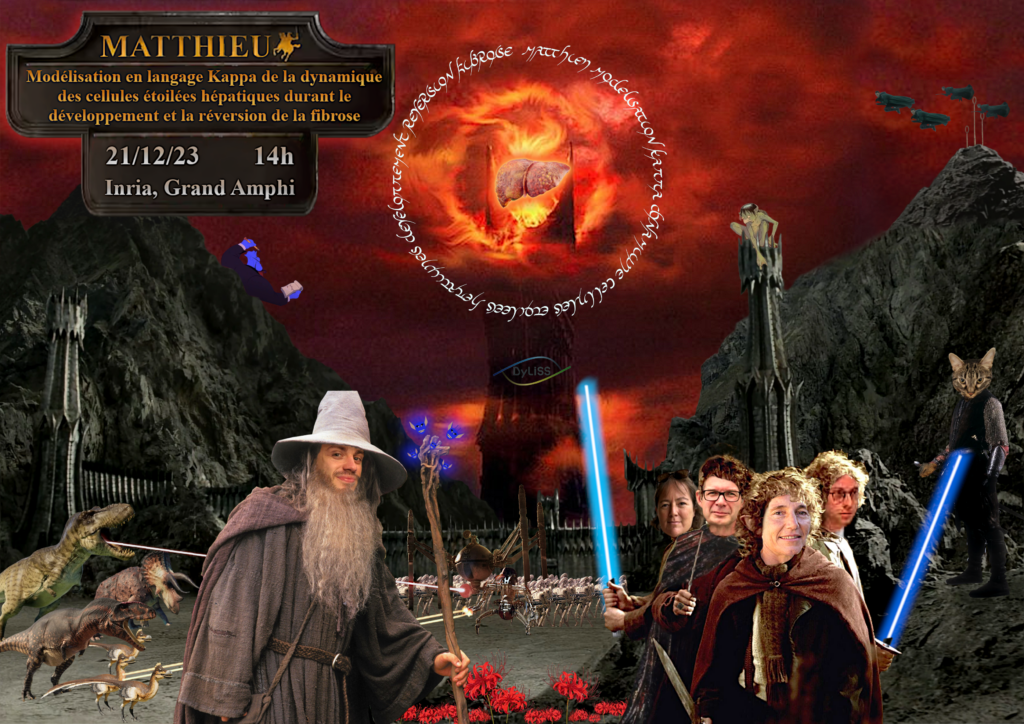Matthieu Bouguéon will defend his PhD thesis “Kappa language modelling of hepatic star cell dynamics during fibrosis development and reversion” on Thursday 21st December 2023 at 14:00, room Métivier at IRISA.
Thesis committee:
– Anna NIARAKIS, Professor – Université de Toulouse (reviewer)
– Cédric LHOUSSAINE, Professor – Université de Lille (reviewer)
– Fabien CRAUSTE, Research director CNRS – UMR 8541 CNRS, Univ Paris Cité (reviewer)
– Sophie LOTERSZTAJN, Research director Inserm – UMR 1149 Inserm, Univ Paris Cité
– Nathalie THÉRET, Research director Inserm – UMR1085 Inserm, EHESP, Univ Rennes (thesis director)
– Anne SIEGEL, Research director CNRS – UMR 6074 CNRS, Inria, Univ Rennes (thesis director)
– Jérôme FERET, Researcher Inria – ENS, Paris (thesis supervizor)
Abstract:
Hepatic fibrosis is an excessive scarring response induced by chronic injury. It is characterised by an accumulation of extracellular matrix (ECM), mainly composed of collagen 1 (COL1), which increases tissue rigidity and leads to severe liver dysfunction. Activation of hepatic stellate cells (HSCs), induced by growth factor TGFB1, is the main process underlying liver fibrosis.
In order to study the dynamics of HSC during the development and reversion of fibrosis, we have developed a multi-scale model integrating the different states of HSC as well as their production of COL1, under the influence of TGFB1. This model is implemented using the Kappa language, which is a rewriting language for site graphs. As well as being the first multi-scale Kappa model, this model allowed us to capture the plasticity of star cells during the development and reversion of fibrosis. The model’s predictions show that the inactivation state of HSC plays an essential role in the development of fibrosis. The model was validated by new experiments in mice and the predictions were validated with RNAseq data from fibrotic patients.





